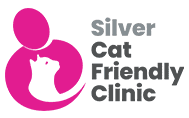When the summer months begin, the days are longer and the temperature is hotter we all need to make sure that our little ones are as safe as possible from the danger of heatstroke.
Heatstroke is a form of nonpyrogenic hyperthermia which is a high temperature that hasn’t been caused by a fever. As in humans heatstroke occurs when the body is no longer able to regulate and keep its temperature at a safe, comfortable level.
Heatstroke is fatal and needs treating as an emergency, if you are worried about your pet then please seek advice from your vet ASAP.
In this blog we want to give you some simple ways to make sure your pet is safe during the summer and also some tips on how to keep them cool.
Cats
Signs of heatstroke include collapse, dribbling and excessive panting. If you suspect your cat is suffering move them to a cool place with a draught and contact your vet immediately.
- Pale coloured cats are extremely vulnerable to sunburn in particular their ears, noses and places with less hair. Ideally the best way to protect your little one is to keep them indoors between 11am and 3pm when the sun is at its strongest. This isn’t always a possibility so you can use nontoxic sunblock specifically designed for pets to help protect them.
- Keeping up with grooming is important through the summer months as matts and tangles can increase body heat.
- Cats are naturally curious and notorious for sneaking off to secret hiding places. During hot months it is a good idea to try and keep an eye on the places your cat likes to hide. Cats often get stuck in greenhouses, sheds, and outhouses and if not gone into regularly can be stuck there for days. It is really important that doors are checked regularly to make sure your cat hasn’t become trapped with no ventilation or water.
- Make sure your cat has access to clean, fresh water at all times the bigger the bowl the better.
- On hot days if possible try and let your cat outside during the cooler parts of the day such as early morning and early evening.
- Watch out for any signs of overheating these are loos of energy and heavy panting. If you see these signs encourage your cat to drink.
Dogs
There are certain types of dogs that may be at a higher risk of getting heat stroke, these are dogs that are obese or have upper airway problems due to being flat-faced. However all dogs are at risk of heat stroke.
In dogs there are 2 types of heat stroke the first occurs during exercise when your dog hasn’t had chance to acclimatise to the heat. The second is when the dog is exposed to a large increase in temperature and doesn’t have access to water or ventilation e.g. being in a parked car, very hot room or an unshaded garden.
- Try to restrict exercise on hot days, if you are walking your dog daily it is best to walk them early morning or early evening when the sun isn’t at its hottest. It is also a good idea to check the temperature of the pavement first, if it is too hot to hold the back of your hand on then it is too hot for your dog’s paws.
- Never leave your dog in a hot room, conservatory or unshaded garden.
- Make sure they always have access to fresh drinking water and a cool shaded place as well as ventilation.
- Always make sure you take some drinking water with you for your dog on a walk.
- If you think they are starting to become hot you can spray them with small amounts of cool water.
- Try to avoid unnecessary long car journeys and never ever leave your dog in a parked car.








